These Astronaut Doodles of Constellations on Space Station Photos are Adorable!
A Celestial Zoo
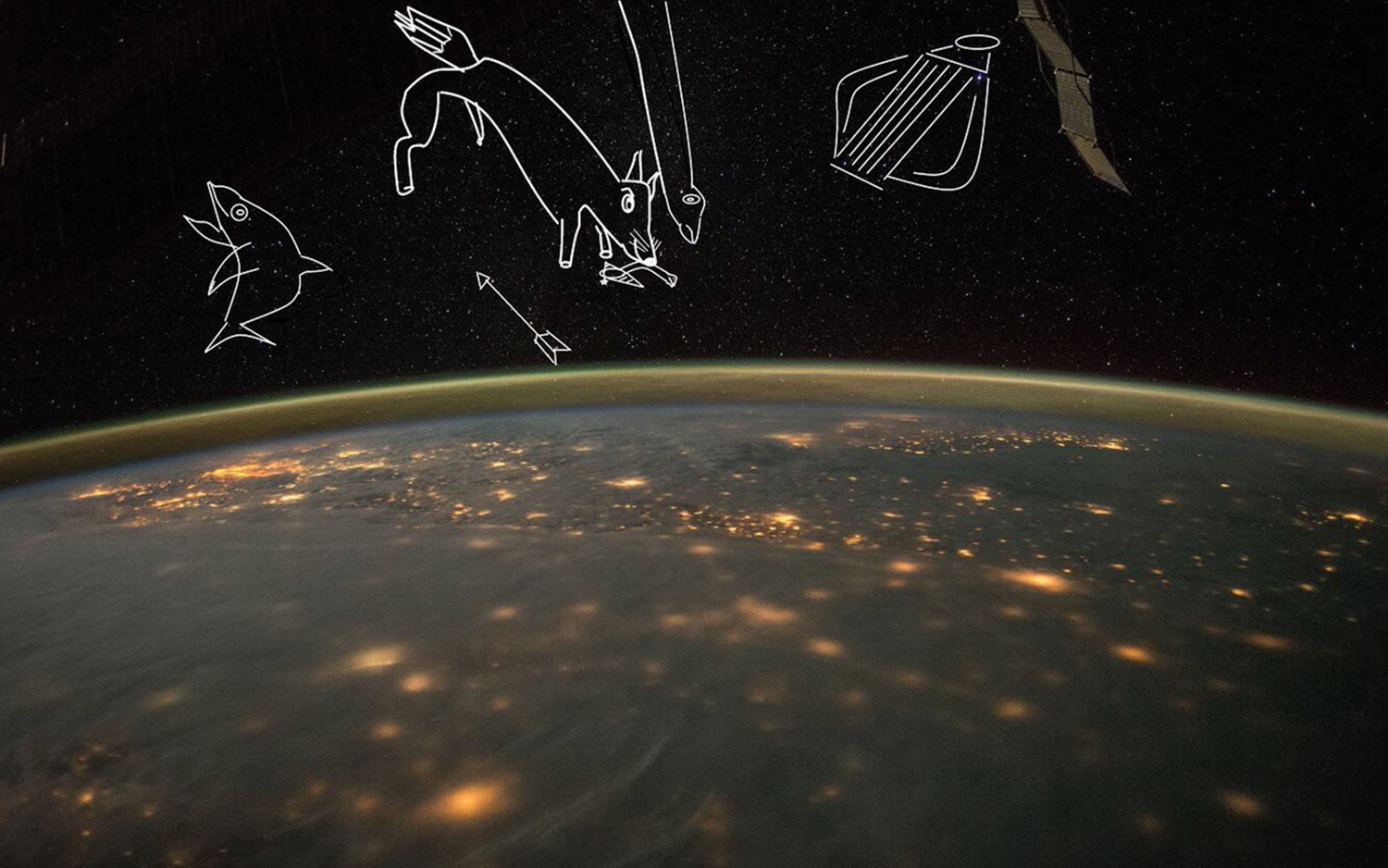
Kimiya Yui, an astronaut with the Japan Aerospace Exploration Agency (JAXA), took some stunning photos of constellations during his first trip to the International Space Station in 2015. Now he's using Microsoft Paint to turn those photos into adorable works of art by doodling cartoonish constellations among the stars and sharing his masterpieces on social media.
Hovering over Earth's city lights in this view are the modern constellations Delphinus, the dolphin; Sagitta, the arrow; Vulpecula, the fox; the "neck" of Cygnus, the swan; and Lyra, the harp. A second, smaller bird also appears in this cosmic masterpiece: Anser, the goose, which dangles from the fox's mouth. Anser is considered a sub-constellation of Vulpecula.
NEXT: A space giraffe!
A Giraffe in Space
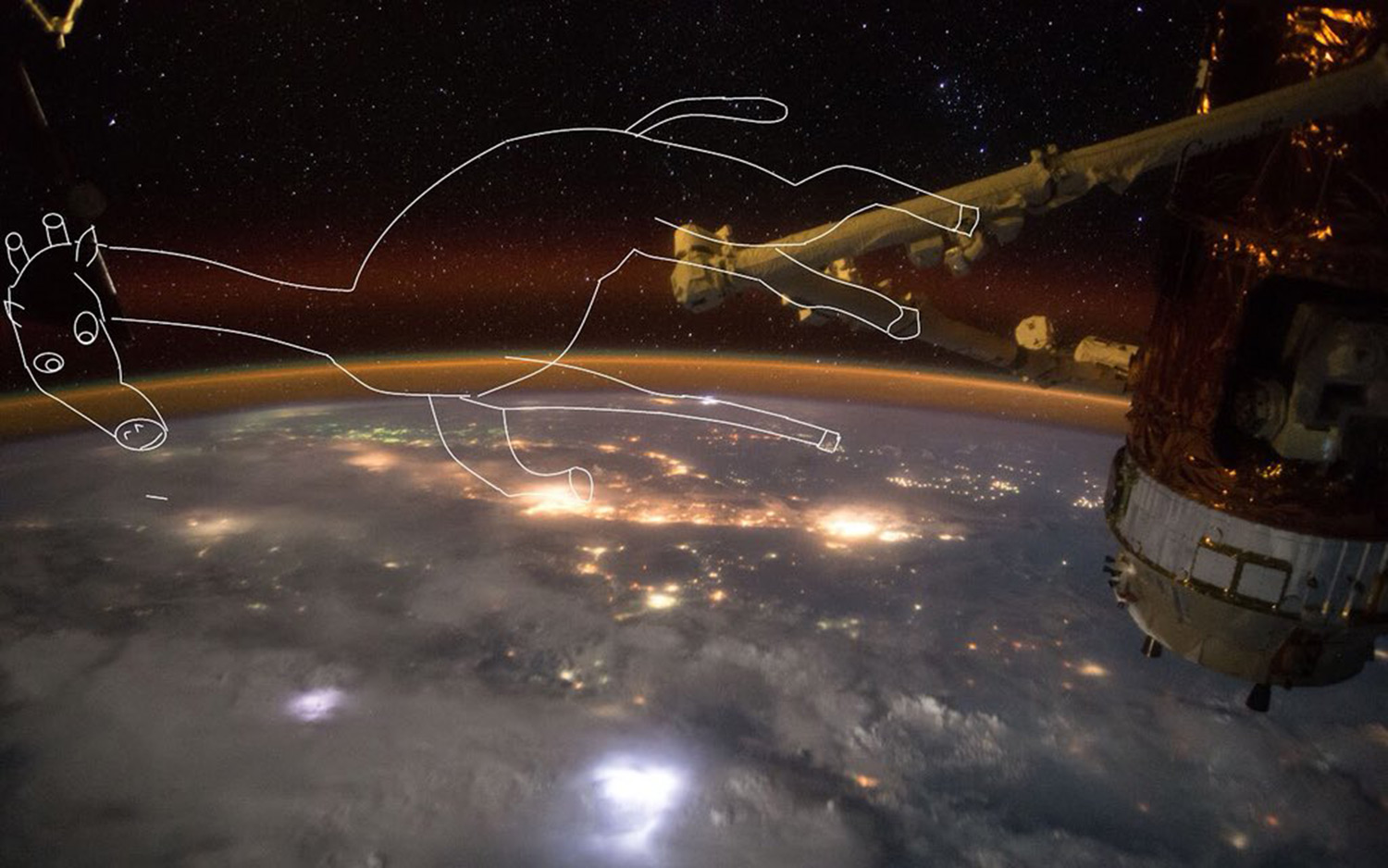
A giant space giraffe looks like it just face-planted on Earth's horizon in the annotated view from the International Space Station. The cartoon giraffe Yui doodled onto this image outlines the modern constellation Camelopardalis, also known as the "camel leopard," or giraffe. Also visible in the foreground is a Japanese Kounotori spacecraft that was used to launch cargo to the space station, as well as the Canadarm2 robotic arm that the astronauts use to grapple and berth the incoming cargo shipments.
NEXT: The Sea Goat
The Sea Goat

This goofy-looking constellation cartoon is Capricornus, the sea goat — half goat, half fish. Its name means "horned goat" in Latin. "The Artist drew on the night's canvas during his lunch break today," Yui tweeted. "A Capricornus whose lower body looks like a fish. What a work of horror." [How to See a Space Goat: Capricornus Constellation Explained]
NEXT: A Big Dog
A Big Dog
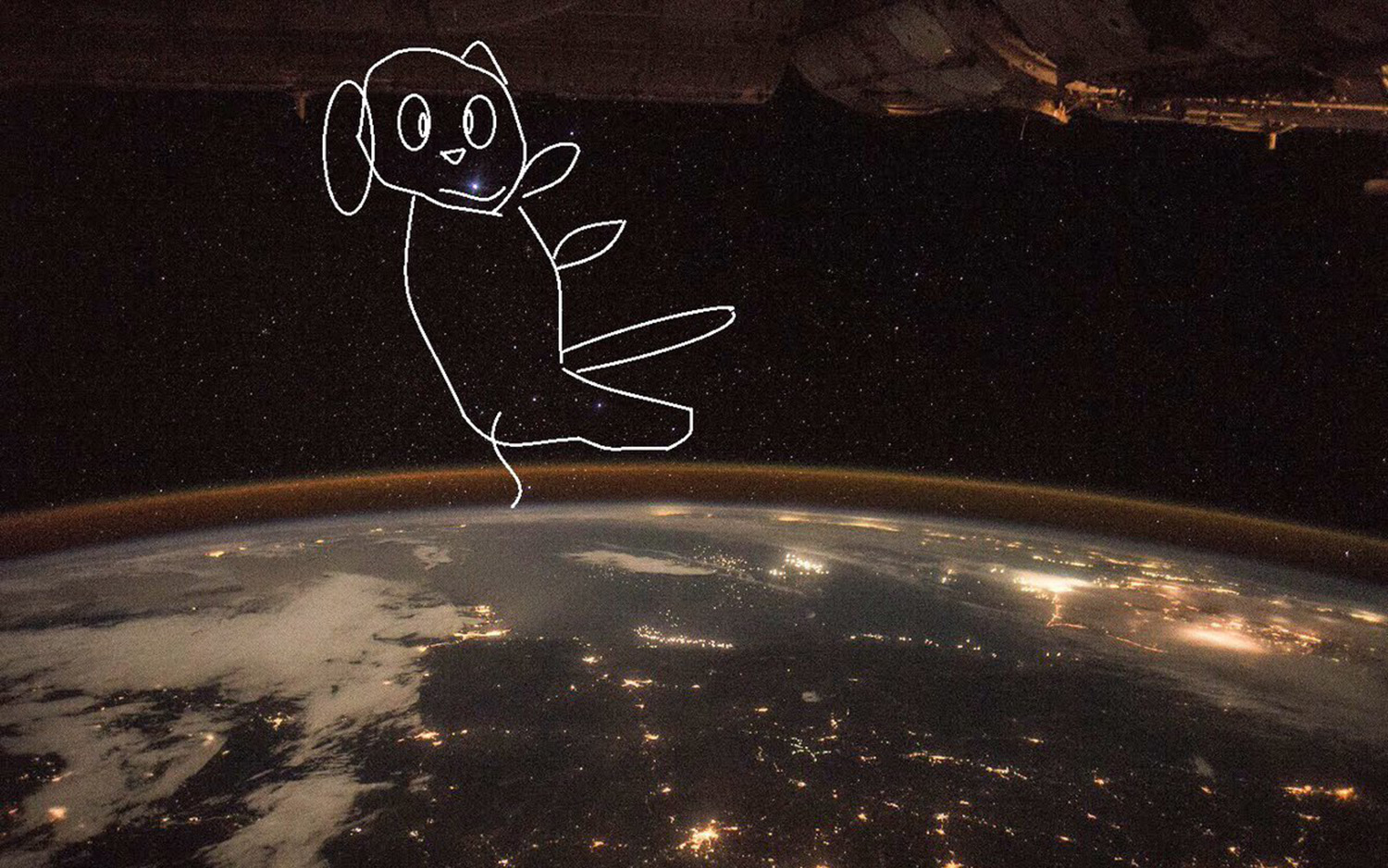
This adorable space dog is Yui's depiction of the modern constellation Canis Major, also known as the Big Dog. "I would like to present the Artist's 'Canis Major,'" Yui tweeted. "I feel some guilt for polluting such a beautiful view," he said, adding that his wife was surprised to see that the drawing actually resembled a dog.
NEXT: Another space-dog doodle
A Small Dog

Sitting atop the Canadarm2 robotic arm near a Japanese Kounotori spacecraft is Yui's drawing of Canis Minor, the Little Dog. This small constellation contains only two stars that are bright enough to see from Earth. Yui wrote on Twitter that he was trying to draw Pluto — the Disney cartoon, not the former planet — but it didn't quite turn out the way he had planned. He also noted that the Kounotori (which means "stork" in Japanese) "seems to be scratching his head."
NEXT: A lizard "sits" on the horizon
Lacerta, the Lizard
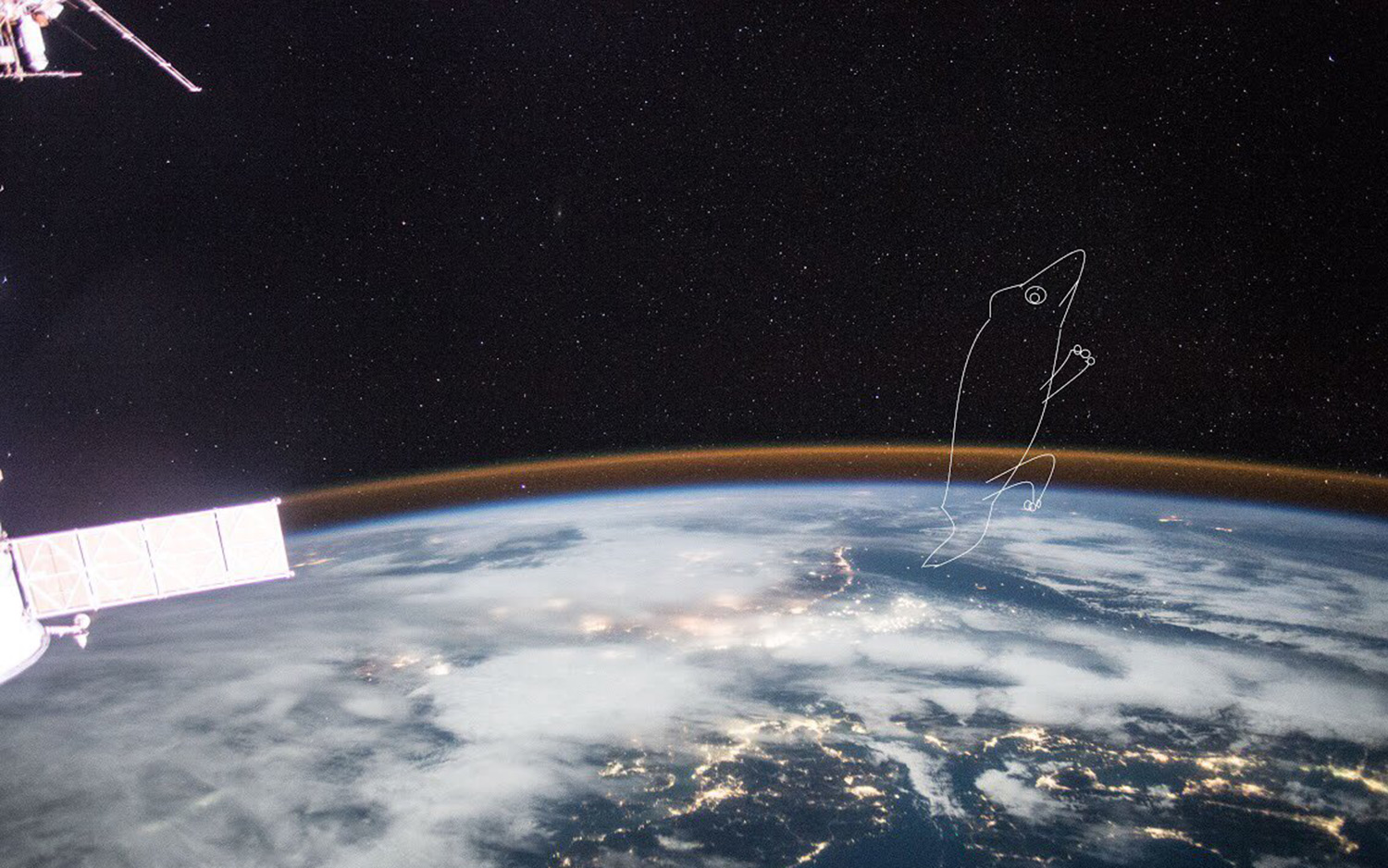
Though it might take a little imagination to see it, this cosmic critter is Lacerta, the lizard. A small and faint modern constellation, Lacerta is in the northern sky between the constellations Andromeda and Cygnus. Its brightest stars form a zigzag line in the sky similar to the larger constellation Cassiopeia, which has earned the lizard the nickname Little Cassiopeia.
"Since the Artist does not have enough confidence to draw a beautiful woman [Andromeda] yet, first let's do a 'Sitting Lizard,'" Yui tweeted. ("Sitting Lizard" is a literal translation of the Japanese name for the constellation.) "Since Andromeda is Cassiopeia's proud daughter, I better draw without disturbing them!" [How the Night Sky Constellations Got Their Names]
NEXT: A cute cosmic couple
The Dove and the Hare
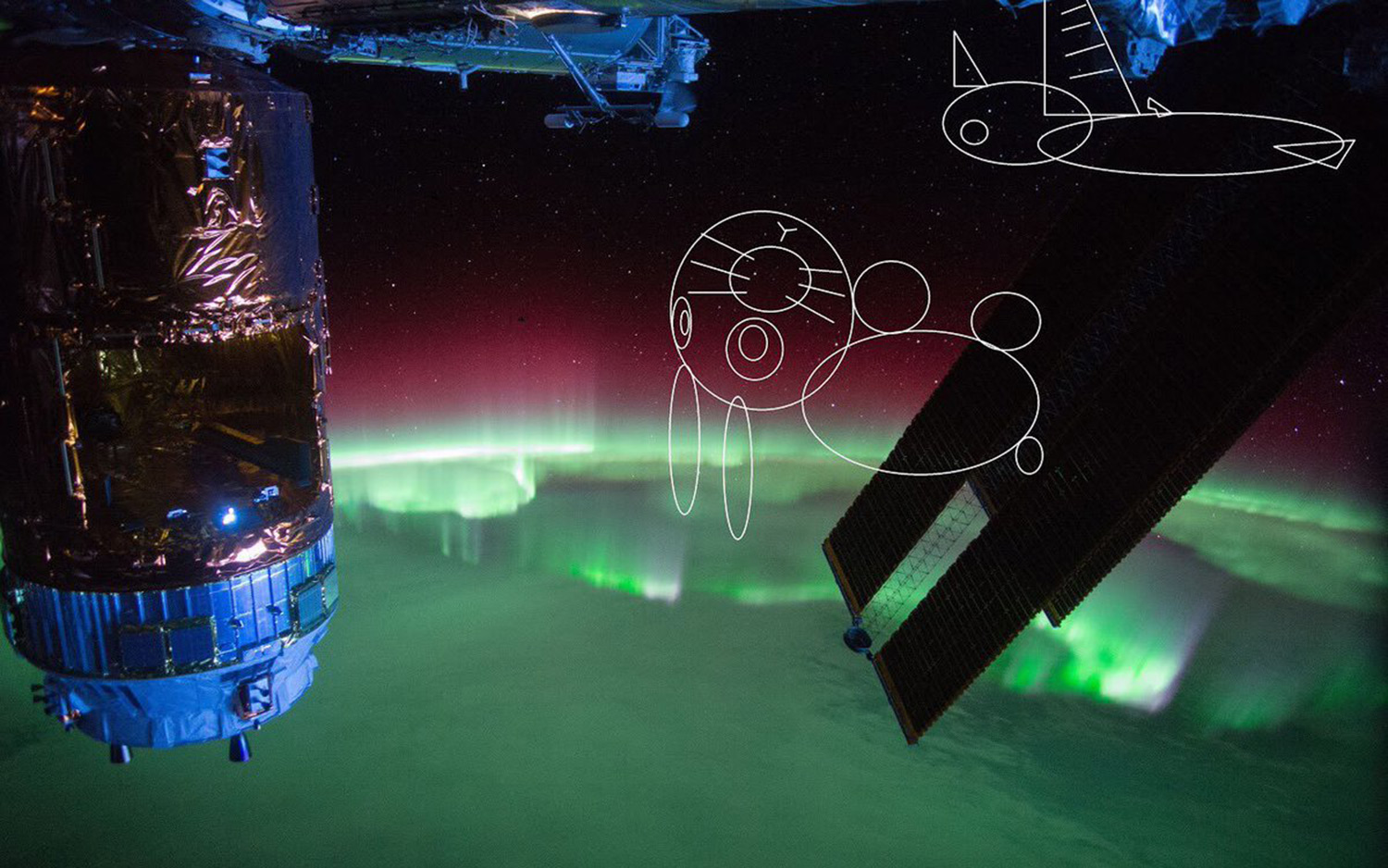
For one of his first constellation cartoons, Yui drew simple circles, ovals, triangles and lines to represent the constellations of Lepus, the hare and Columba, the dove. [How to See a Cosmic Bunny and Dove in Night Sky]
You can keep up with Yui and his latest doodles on Twitter via @Astro_Kimiya.
Email Hanneke Weitering at hweitering@space.com or follow her @hannekescience. Follow us @Spacedotcom, Facebook and Google+.
Join our Space Forums to keep talking space on the latest missions, night sky and more! And if you have a news tip, correction or comment, let us know at: community@space.com.
Get the Space.com Newsletter
Breaking space news, the latest updates on rocket launches, skywatching events and more!

Hanneke Weitering is a multimedia journalist in the Pacific Northwest reporting on the future of aviation at FutureFlight.aero and Aviation International News and was previously the Editor for Spaceflight and Astronomy news here at Space.com. As an editor with over 10 years of experience in science journalism she has previously written for Scholastic Classroom Magazines, MedPage Today and The Joint Institute for Computational Sciences at Oak Ridge National Laboratory. After studying physics at the University of Tennessee in her hometown of Knoxville, she earned her graduate degree in Science, Health and Environmental Reporting (SHERP) from New York University. Hanneke joined the Space.com team in 2016 as a staff writer and producer, covering topics including spaceflight and astronomy. She currently lives in Seattle, home of the Space Needle, with her cat and two snakes. In her spare time, Hanneke enjoys exploring the Rocky Mountains, basking in nature and looking for dark skies to gaze at the cosmos.
